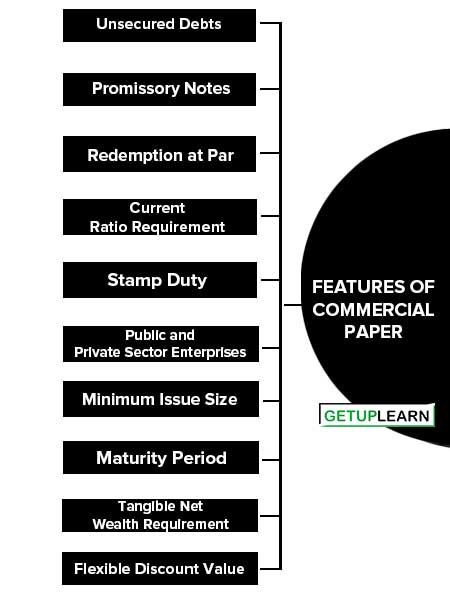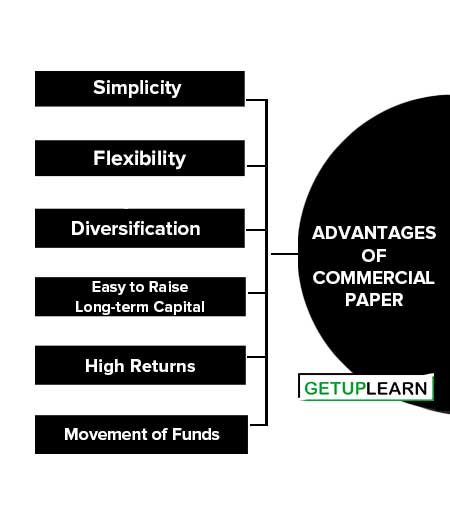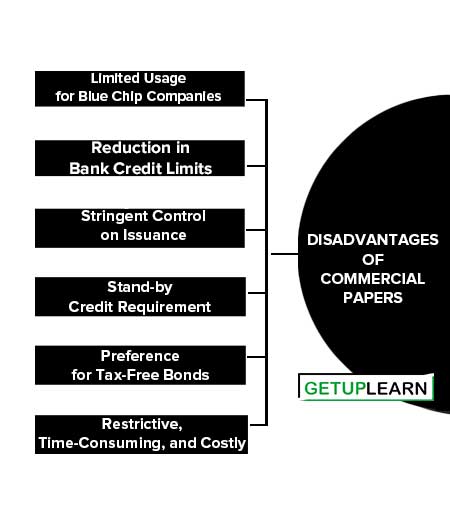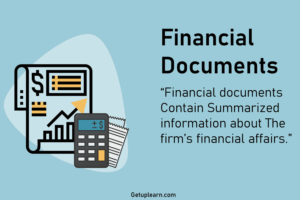Table of Contents
- 1 What is Commercial Paper Market?
-
2 Features of Commercial Paper
- 2.1 Unsecured Debts
- 2.2 Promissory Notes
- 2.3 Redemption at Par
- 2.4 Current Ratio Requirement
- 2.5 Stamp Duty
- 2.6 Public and Private Sector Enterprises
- 2.7 Minimum Issue Size
- 2.8 Maturity Period
- 2.9 Tangible Net Wealth Requirement
- 2.10 Flexible Discount Value
- 2.11 Floating Expenses
- 2.12 Varying Interest Rates
- 2.13 Wide Range of Buyers
- 2.14 Non-Repatriable Basis for NRIs
- 2.15 Market Influences
- 3 Participants of Commercial Paper Market
- 4 Advantages of Commercial Paper
- 5 Disadvantages of Commercial Papers
- 6 FAQs about the Commercial Paper Market
What is Commercial Paper Market?
Commercial paper is one of the financial instruments of the money market. It provides an opportunity for well-rated companies /good track record companies for raising funds on a short-term basis. The market always provides funds to sincere companies which maintain financial discipline enabling them to procure funds confidently. In the financial market credibility is the most important factor at present.
Financial discipline leads to credibility; credibility has the borrowing capacity from the market. In the recent period, many good reputed companies have accursed the commercial paper market for meeting their working capital requirements.
Commercial paper is an unsecured provisionary note issued with a fixed maturity by a company approved by RBI, negotiable by endorsement and delivery, issued in bearer form, and issued at such discount on the face value as may be determined by the issuing company.
They are generally issued by well-rated companies for a minimum of three months and a maximum of six months. They are regulated by non-banking companies’ directions. Those directions were issued by RBI in 1989. The directions come into force on 1-1-1990. Hence, debt instruments that are issued by corporate houses to raise short-term financial resources from the money market are called commercial papers.
Features of Commercial Paper
The salient features of Commercial Paper are as follows:
- Unsecured Debts
- Promissory Notes
- Redemption at Par
- Current Ratio Requirement
- Stamp Duty
- Public and Private Sector Enterprises
- Minimum Issue Size
- Maturity Period
- Tangible Net Wealth Requirement
- Flexible Discount Value
- Floating Expenses
- Varying Interest Rates
- Wide Range of Buyers
- Non-Repatriable Basis for NRIs
- Market Influences

Unsecured Debts
Commercial papers are unsecured debts of corporate entities. This means that they are not backed by any specific collateral or asset.
Promissory Notes
Commercial papers are issued in the form of promissory notes. These notes serve as a written promise from the issuer to repay the principal amount to the holder at maturity.
Redemption at Par
Commercial papers are redeemable at par value to the holder upon reaching maturity. The issuer is obligated to repay the principal amount in full, without any discount or premium.
Current Ratio Requirement
The issuing company is required to maintain a current ratio of at least 1.33:1. This ratio indicates the company’s ability to meet its short-term obligations.
Stamp Duty
Commercial papers attract stamp duty, which is a tax levied on certain financial transactions. The exact amount of stamp duty varies depending on the jurisdiction.
Public and Private Sector Enterprises
The market for commercial papers comprises issues made by both public and private sector enterprises. This provides a diverse range of investment opportunities for buyers.
Minimum Issue Size
The minimum issue size for commercial papers is set at rupees twenty-five lakhs. This ensures that only larger issuers participate in this market.
Maturity Period
Commercial papers have a maturity period ranging from 90 days to 180 days. This allows corporations to meet their short-term funding needs efficiently.
Tangible Net Wealth Requirement
The issuer company must have a tangible net wealth of at least rupees 5 crores. This requirement ensures that the issuer has a certain level of financial stability.
Flexible Discount Value
The discount value of commercial papers may be decided by the issuing company. This allows issuers to tailor the terms of the commercial papers to attract investors.
Floating Expenses
Commercial papers require floating expenses, which are the costs associated with issuing and maintaining these instruments. These expenses include administrative fees, underwriting fees, and other transaction costs.
Varying Interest Rates
The rate of interest applicable to commercial papers can vary greatly. It depends on various factors such as the issuer’s creditworthiness, prevailing market conditions, and the maturity period.
Wide Range of Buyers
Commercial papers may be issued to a variety of buyers, including individuals, banks, registered companies, corporate bodies, and union corporate bodies. This broadens the investor base and enhances liquidity.
Non-Repatriable Basis for NRIs
Commercial papers can be issued to non-resident Indians (NRIs) on a non-repatriable basis. This means that the funds invested cannot be freely transferred back to the investor’s home country.
Market Influences
The marketability of commercial papers is influenced by the prevailing rates in the call money market and foreign exchange market. Changes in these markets can impact the demand and pricing of commercial papers.
Participants of Commercial Paper Market
Commercial paper is a money-market security issued (sold) by large corporations to get money to meet short-term debt obligations (for example, payroll), and is only backed by an issuing bank or corporation’s promise to pay the face amount on the maturity date.
In India, the participants of commercial paper are Issuers: All private Sector Companies, public sector units, non-banking companies, etc. Investors: Individuals, banks, corporations, and also NRIs. Usually, banks, large corporate bodies, and public sector units with investible funds participate in the commercial paper market.
Advantages of Commercial Paper
The advantages of commercial paper market are:
- Simplicity
- Flexibility
- Diversification
- Easy to Raise Long-term Capital
- High Returns
- Movement of Funds

Simplicity
The advantage of commercial paper lies in its simplicity. It involves hardly any documentation between the issuer and the investor.
Flexibility
The issuer can issue commercial paper with maturities tailored to match the cash flow of the company.
Diversification
A well-rated company can diversify its source of finance from the banks to short-term money markets at a somewhat cheaper cost.
Easy to Raise Long-term Capital
The companies which are able to raise funds through commercial paper become better known in the financial world and are thereby placed in a more favorable position for raising such long-term capital as they may, from time to time, require. Thus, there is an inbuilt incentive for companies to remain financially strong.
High Returns
The commercial paper provides investors with higher returns than they could get from the banking system.
Movement of Funds
Commercial paper facilitates the securitization of loans resulting in the creation of a secondary market for the paper and efficient movement of funds providing cash surplus to cash deficit entities.
Disadvantages of Commercial Papers
Commercial papers, despite their benefits, also have several disadvantages associated with their usage. Here are the key disadvantages of commercial papers:
- Limited Usage for Blue Chip Companies
- Reduction in Bank Credit Limits
- Stringent Control on Issuance
- Stand-by Credit Requirement
- Preference for Tax-Free Bonds
- Restrictive, Time-Consuming, and Costly

Limited Usage for Blue Chip Companies
The usage of commercial papers is often limited to only blue chip companies. Smaller or less-established companies may find it challenging to access the commercial paper market, as investors generally prefer to invest in companies with strong credit ratings and financial stability.
Reduction in Bank Credit Limits
When a company issues commercial papers, it can lead to a reduction in its bank credit limits. This happens because the outstanding amount of commercial papers is included in the calculation of the company’s overall debt exposure, which in turn affects the credit limits available to the company from banks.
Stringent Control on Issuance
The issuance of commercial papers is subject to a high degree of control and scrutiny. Companies must adhere to regulatory guidelines, credit rating requirements, and other eligibility criteria. This level of control can make the issuance process more complex and time-consuming.
Stand-by Credit Requirement
In some cases, issuers of commercial papers may be required to establish stand-by credit facilities. These facilities act as a backup source of funds in case the issuer is unable to repay the commercial papers at maturity. Setting up stand-by credit can increase the costs and complexity of the issuance.
Preference for Tax-Free Bonds
Both lenders and borrowers, particularly corporate entities, may prefer tax-free bonds over commercial papers. Tax-free bonds offer the advantage of tax exemption on interest income, making them more attractive from a taxation perspective. This preference can reduce the demand for commercial papers in certain situations.
Restrictive, Time-Consuming, and Costly
The process of issuing commercial papers can be restrictive, time-consuming, and costly for companies. Meeting regulatory requirements, obtaining credit ratings, arranging necessary documentation, and engaging in marketing activities to attract investors can involve significant effort and expenses for the issuer.
While commercial papers offer short-term financing solutions, these disadvantages highlight the challenges and limitations associated with their usage. It is essential for companies to carefully evaluate their specific circumstances and consider alternative funding options before deciding to issue commercial papers.
FAQs about the Commercial Paper Market
What are the features of commercial paper?
The following are the features of commercial paper:
1. Unsecured Debts
2. Promissory Notes
3. Redemption at Par
4. Current Ratio Requirement
5. Stamp Duty
6. Public and Private Sector Enterprises
7. Minimum Issue Size
8. Maturity Period
9. Tangible Net Wealth Requirement
10. Flexible Discount Value.
What are the advantages of commercial paper?
These are the advantages of commercial paper:
1. Simplicity
2. Flexibility
3. Diversification
4. Easy to Raise Long-term Capital
5. High Returns
6. Movement of Funds.
What are the disadvantages of commercial papers?
The disadvantages of commercial papers are:
1. Limited Usage for Blue Chip Companies
2. Reduction in Bank Credit Limits
3. Stringent Control on Issuance
4. Stand-by Credit Requirement
5. Preference for Tax-Free Bonds
6. Restrictive, Time-Consuming, and Costly.



